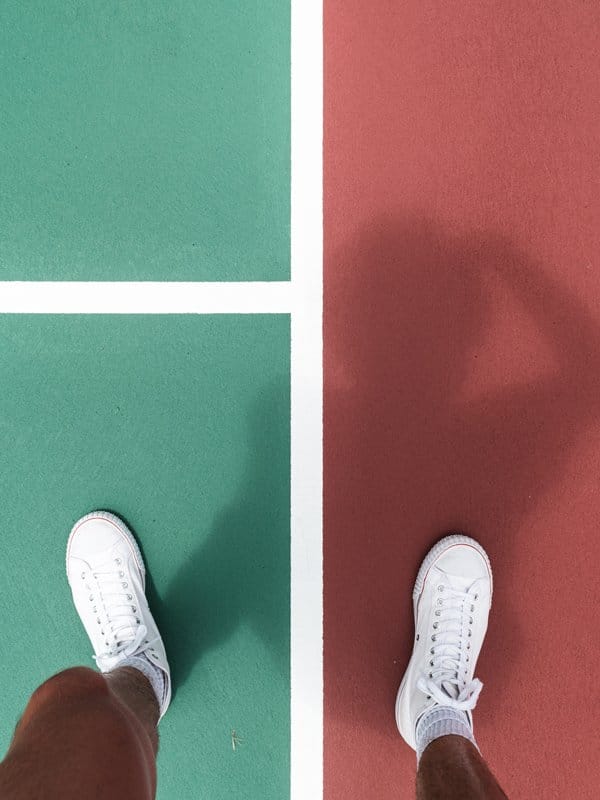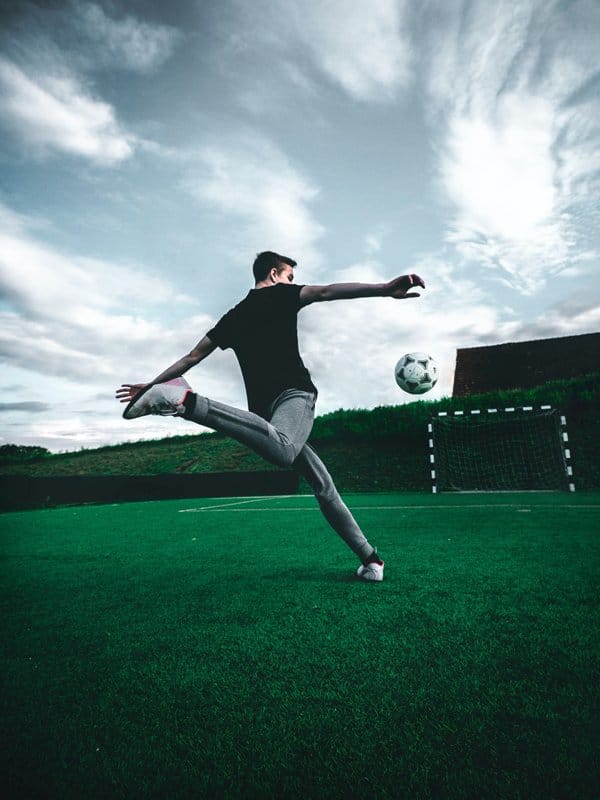A comprehensive rehabilitation programme guided by a Surgeon and physiotherapist will enhance recovery following surgery and facilitate return to sport/Exercise. General aspects of the post-operative rehabilitation and goals are listed below:
Range of Motion (ROM)
- Restoring pre-injury range of motion improves surgical outcomes and minimises the chances of scarring within the knee. There is a particular focus on restoring full knee extension early.
Walking and running gait
- Muscle imbalances/dysfunction is common in the early stages following ACL reconstructive surgery. This leads to altered gait mechanics with reductions in stride length, altered swing and stance phases together with weak/uncoordinated firing of hip, knee and ankle musculature.
- Early weight bearing attempts to restore gait mechanics in a timely fashion and reduce the incidence of anterior knee pain.
- Treadmill rehabilitation (mid-stage) is a good way of normalising joint motion of the lower limb. Backwards walking in particular, strengthens the quadriceps while minimising anterior knee pain. This also provides for sport-specific training requiring backward locomotion.
Muscle strengthening and endurance training
- Muscle contains Type 1 (endurance) and Type 2 (fast-twitch) fibres in varying amounts. Following ACL injury, these fibres show signs of atrophy (wasting away) and changes in cellular composition. Therefore, ACL rehabilitation requires focus on both these different types of fibres namely; low-load/high repetitions (endurance) and high-load/low repetitions (strength)
Exercise quality is key
- It is imperative NOT to begin new exercises prior to neuromuscular readiness.
- If certain muscle groups remain weak, this leads to compensation which in turn produce faulty movement patterns. If these faults are not corrected, this may perpetuate the original weakness.
Neuromuscular/Proprioceptive retraining.
Neuromuscular control is often altered following ACL injury and surgery. Specific exercises activate receptors within the knee joint which in turn trigger compensatory muscle activation patterns to aid knee stability. These exercises should commence early following surgery to promote neuromuscular integration which help with gait training and muscle strengthening. Functional outcomes highly correlate with balance and proprioception following ACL reconstruction.
Stages of Rehabilitation
Weeks 0-2
Goals
Manage Pain and post operative swelling
Establish Range of motion (0-90°, Full Extension a priority)
Retrain gait pattern
Re-establish muscular control of quadriceps, hamstrings and calves
Exercise examples
Inner range quadricep contractions
Calf raises
Hamstring contractions/gentle heel digs
1/4 isometric squats
Weeks 2-6
Goals
Progress to full knee flexion and extension
Achieve normal walking gait pattern
Progress balance/proprioception
Range of motion
Prone assisted knee flexion and extension
Assisted quadriceps stretching exercises (standing)
Heel slides and exercise bike (allow full circles forward & backward)
Muscles
Quadriceps
Closed chain exercises such as assisted squats/leg press/step ups
Hamstrings
bridging
Gluteals
bridging, side lying abduction
Calves
Calf raises
Proprioception
Single leg balance
Gait
Progress to unassisted full weight bearing
Exaggerate hip and knee flexion during swing phase of gait
Cardiovascular
Exercise bike
Start elliptical trainer

Weeks 6-9
Goals
To achieve full, pain free range of motion
Begin limited/specific isokinetic quadriceps exercises
ROM
Achieve full knee flexion and extension
Continue hamstring and calf stretches
Muscles
Quadriceps
Can start full squats and lunges
Hamstrings
Progress bridging, curls, RDL’s
Gluteals
Advance on all direction strengthening (ankle weights, resistance cables)
Calves
Advance on all direction strengthening (ankle weights, resistance cables)
Proprioception
Single leg stance on mini-trampoline
Upper body work (throwing)
Floor disc squatting & throwing
Wobble board (balance)
Gait
Hydrotherapy sessions:
Knee ROM
walking (all directions)
hip ROM
Cardiovascular
Exercise bike (increasing time & resistance)
Swimming (flutter kick only)
Pool jogging
Treadmill (Walking. Avoid jogging)
Weeks 9-12
Goals
Progressive quadriceps & hamstring strengthening, proprioception and flexibility
ROM
Continue stretches as before ensuring achievement of full knee range of motion Muscles
Quadriceps
Dynamic lunges ensuring proper truncal alignment,
backward step-ups, eccentric step downs (20cm)
single leg squats
low resistance jumping (2 legs, then jogging, then single leg hops)
progress with isokinetic programme
Hamstrings
Hamstring curls (in the standing, sitting and prone position) with increasing resistance as tolerated, eccentric hamstring rehabilitation
Gluteals
Progress as before
Calves
Eccentric heel drops
Proprioception
Catching & throwing exercises on wobble boards & mini-trampoline.
Single leg stance on a floor disc (kicking drills, upper body skills)
Cardiovascular
Pool running (increasing time and repetitions)
Exercise bike (increasing time & resistance)
Treadmill (incline walk and increase speed. Avoid jogging)
Weeks 12 – 16
Goals
Continue flexibility and strengthening of the lower chain
Commence sport specific quadriceps/hamstring strengthening, proprioception & cardio fitness
Muscles
Continue concentric & eccentric quadriceps and hamstring exercises.
Backward lunge walking.
Progress from jogging to running.
Split squat jumps.
Single leg drop landing (5cm)
Proprioception & Agility
Ladder drills (forwards/backwards/side-to-side)
Side step-overs (progressing to side step-overs)
Skipping and hopping (2 legs progressing to single leg)
Mini-trampoline (2 feet jumps – jogging – single leg jumps)
Continue single leg floor disc exercises (aim for sport specific activities. Eg: kicking, hockey shot, cricket batting etc.)
Cardiovascular
Pool hopping and squat jumping (in shallow water)
Jogging (straight on flat, even ground. Avoid sudden cuts/change of direction)
Treadmill jogging progressing to running
Sport specific cardio training
Weeks 16 – 26
Goals
Sport specific lower chain strengthening and progress to plyometric exercises
Continue proprioceptive & cardiovascular fitness
Muscles
Progress as before concentrating on specific deficits on muscle groups (if any arise)
Proprioception
Progress on mini-trampoline
Forward & side hops (maintain 5 second single leg balance on landing)
Cutting drills (quick stop & balance)
Agility & Plyometrics
Ladder drills (all directions)
Progress on running/lunging/vertical jumps/run-stop-sidestep
Single leg forward & side hopping.
Single leg jumps o Box hops/jump and forward sprints
Single leg drop landing (progressive up to 25cm)
Cardiovascular
Increase intensity on bike/treadmill/jogging
Progress from running to sprinting (ensure proper rhythmic stride)
Jogging with directional change/uneven surface
Jogging with turns 90/180/360°
Jogging and cutting with 45° change of direction
Acceleration and deceleration running, add on tight turns and hills as tolerated
Outdoor cycling
Swimming (avoid the ‘whip-kick’)

Months 6-9
Goals
Excellent fitness, strength, power, agility neuromuscular control, symmetry and stability
Sport specific practice
Exercise Suggestions
Last minute decision drills
Single limb drop landing (at least within 10% of uninvolved side)
Months 10-12
Return to full training. No games until completed 6 weeks of full training and game simulation.
Return to Sport Testing
Single limb hop for distance
Single-limb crossover triple hop for distance
Single-limb timed hop over 6m
T test
